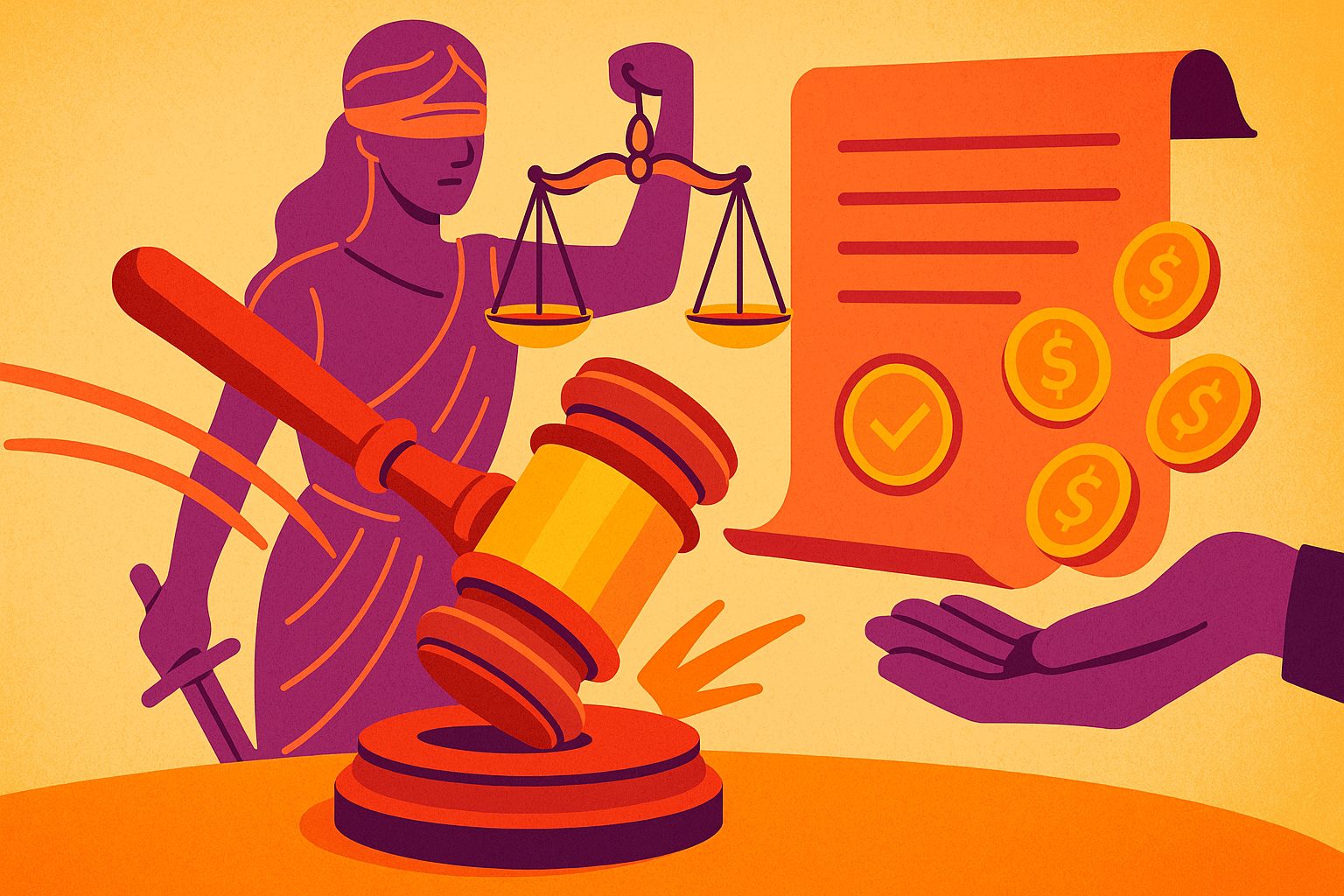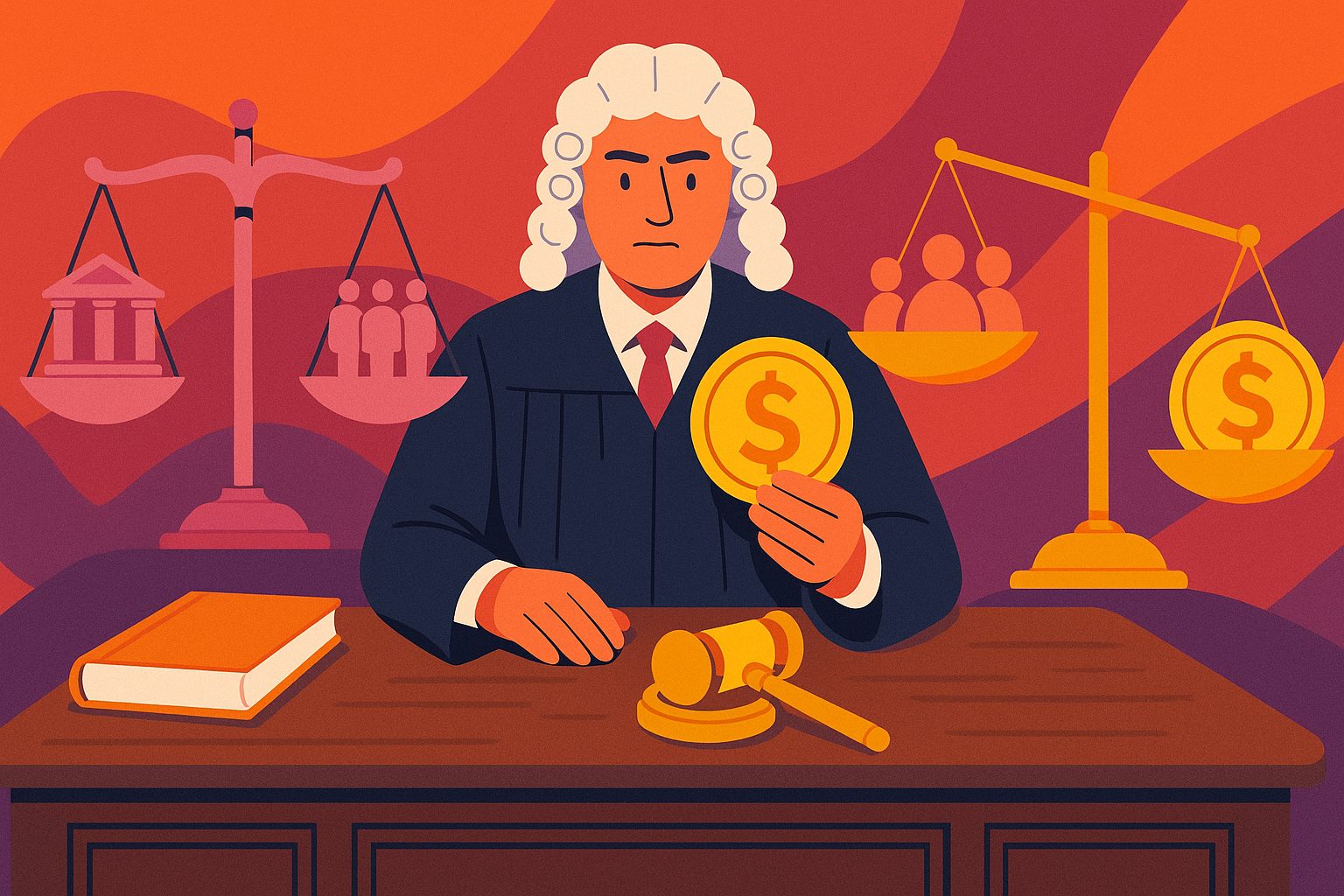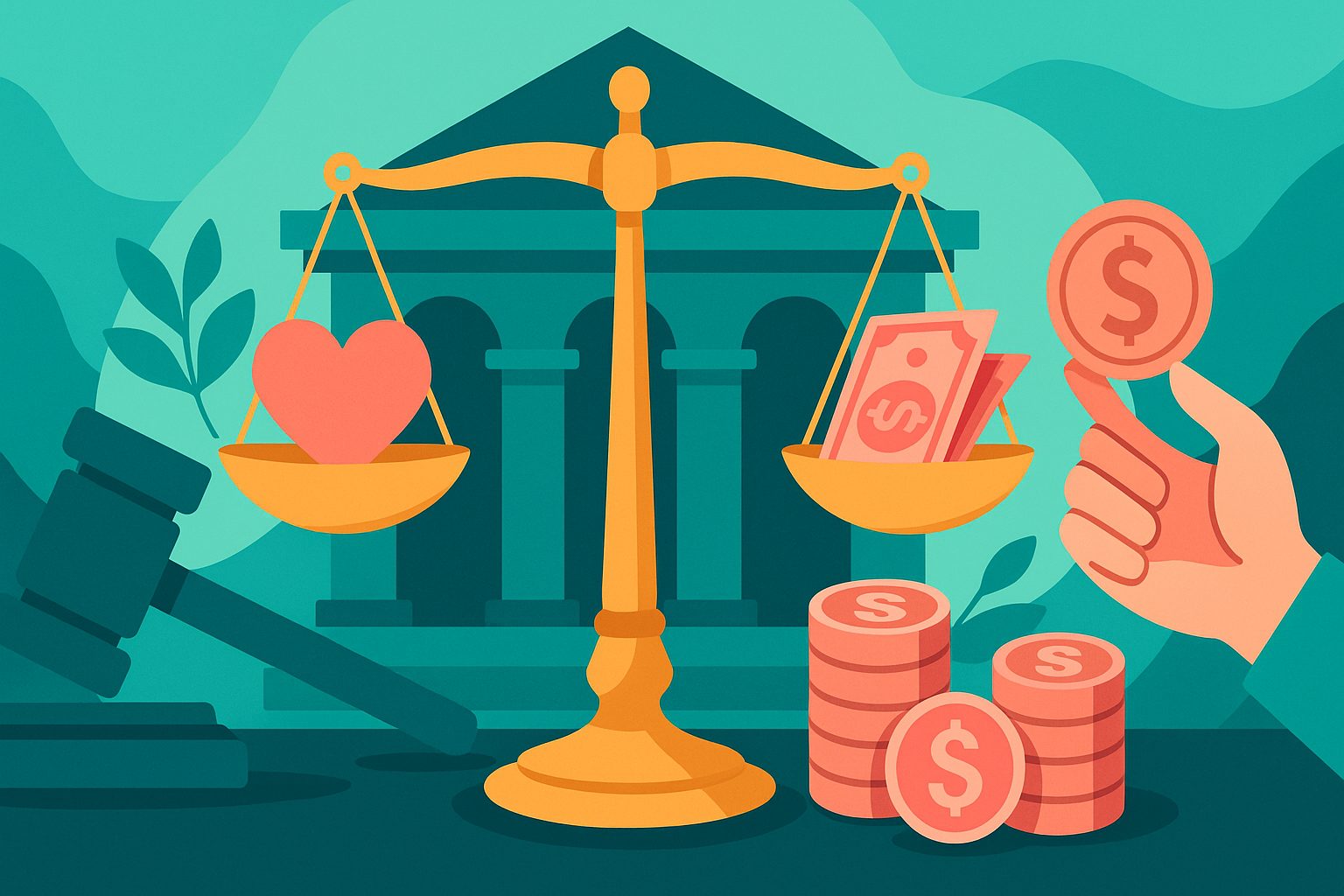Justice Meets Innovation: The Rise of Litigation Crowdfunding
For centuries, access to justice has largely been determined by wealth. The high cost of legal representation, court fees, and expert witnesses often made legal battles the exclusive domain of corporations or the affluent. But a revolutionary force is now challenging that paradigm—litigation crowdfunding. By harnessing the power of collective investment and digital platforms, litigation crowdfunding is opening the courtroom doors to individuals and causes that once stood no chance. It’s democratizing legal access, reshaping attorney-client dynamics, and even turning legal cases into new asset classes. In the process, it’s changing the very fabric of the legal system.
Breaking Down the Concept: What Is Litigation Crowdfunding?
Litigation crowdfunding refers to the practice of raising funds from the public to finance legal actions. This can involve individual plaintiffs seeking justice in civil or criminal matters, class action lawsuits, public interest litigation, or even commercial disputes. These campaigns are hosted on specialized crowdfunding platforms that present case details, financial needs, and the intended legal strategy. In some models, contributors offer support as donations, driven by shared values or public interest. In others—especially commercial litigation funding—backers are treated as investors who receive a share of any financial settlement or court award. This dual-purpose model, blending social good and profit motive, makes litigation crowdfunding a powerful and polarizing force in legal innovation.
From David vs Goliath to Crowd vs Goliath
Litigation crowdfunding has empowered a modern-day David to take on legal Goliaths. Whistleblowers, victims of corporate negligence, and underrepresented communities can now galvanize public support and raise the funds necessary to engage skilled legal teams. In doing so, they challenge powerful institutions that once seemed legally untouchable. This collective approach not only offsets legal costs but also builds public awareness and legitimacy around a cause. Crowdfunded cases often gain traction in media and attract interest from advocacy groups, legal scholars, and larger funders. The result is a groundswell effect—turning once-private legal disputes into national conversations.
The Legal Industry’s New Financial Frontier
Litigation crowdfunding is doing more than altering how lawsuits are funded; it’s also reshaping how legal cases are valued. Commercial litigation funders now analyze legal claims like venture capitalists assess startups—evaluating case merits, likelihood of success, potential damages, jurisdictional precedent, and the legal team’s track record. This financial lens has introduced a level of data-driven strategy to case selection that is both controversial and transformative. In high-stakes lawsuits, funding rounds can reach into the millions, with some platforms offering litigation investment portfolios similar to private equity funds. This development is turning legal outcomes into investment opportunities—sparking interest from hedge funds, family offices, and accredited investors looking to diversify with non-correlated returns.
A Lifeline for Public Interest and Human Rights Cases
Not all litigation crowdfunding is motivated by profit. Many campaigns are driven by ideals: holding institutions accountable, defending constitutional rights, or supporting environmental justice. Public interest organizations and pro bono attorneys have found in crowdfunding a way to bridge funding gaps, bypass bureaucratic grant processes, and build grassroots backing. From immigration battles to climate lawsuits, the crowd has become a lifeline for cases that might otherwise never see a courtroom. This form of legal advocacy also fosters greater civic engagement, allowing contributors to become part of a collective stand for justice. Litigation crowdfunding, in this context, becomes not just a financial mechanism but a powerful democratic tool.
Platform Power: The Role of Technology in Case Discovery and Support
Technology is at the heart of the litigation crowdfunding movement. Dedicated platforms curate cases, perform initial legal reviews, manage fund transfers, and provide transparency to backers. These platforms often incorporate storytelling elements—case videos, updates, and attorney insights—to humanize the legal journey and inspire support. Some use algorithms to evaluate risk, while others rely on legal advisory boards. These tech-enabled interfaces streamline campaign creation and ensure regulatory compliance, especially when offerings resemble investment products. As litigation crowdfunding matures, platforms are beginning to specialize: some focus on medical malpractice, others on civil rights, and still others on commercial disputes. This niche approach allows platforms to attract communities of interest and build legal funding ecosystems tailored to specific areas of law.
Regulatory and Ethical Considerations in a Growing Industry
As litigation crowdfunding gains traction, it raises critical legal and ethical questions. Is it appropriate to treat legal outcomes as investment vehicles? How can platforms prevent the abuse of funds or the promotion of frivolous lawsuits? What protections exist for contributors or investors if a case fails? Jurisdictions around the world are grappling with these questions. In the U.S., litigation funding is legal but regulated at the state level, resulting in a patchwork of laws. Some states require disclosure of third-party funders in court filings; others have proposed stricter limitations. Legal ethics boards are also weighing in, particularly regarding attorney independence, client confidentiality, and fee arrangements. Navigating these issues requires platforms to balance innovation with caution, ensuring that access to justice does not come at the cost of legal integrity.
Risks and Rewards: The Investor’s Perspective
For those approaching litigation crowdfunding as an investment, the risk-reward calculus is both compelling and uncertain. On one hand, successful cases can yield significant returns, particularly in class actions or high-value settlements. Legal outcomes are often uncorrelated with traditional market cycles, making them attractive for portfolio diversification. On the other hand, legal proceedings are inherently unpredictable. Delays, appeals, jurisdictional quirks, or unforeseen legal interpretations can derail even the strongest cases. Transparency from the outset—around legal strategy, estimated timelines, potential costs, and distribution mechanics—is essential to building investor trust. Some platforms mitigate risk by pooling cases into diversified portfolios, reducing dependence on a single verdict. Still, the space remains risky, and investors must perform due diligence and prepare for high volatility.
Changing Attorney-Client Dynamics
Litigation crowdfunding is also transforming the traditional attorney-client relationship. When funding is involved, attorneys must balance client advocacy with the interests of third-party backers. In cases involving investors, legal teams may face pressure to settle early or pursue riskier strategies depending on how returns are structured. Ethical rules generally prohibit lawyers from being influenced by non-clients, but the lines can blur when funders hold financial stakes. To manage this tension, many campaigns clearly define roles, outline governance policies, and limit funder influence on litigation decisions. Some attorneys also welcome crowdfunding as a way to free clients from financial stress, enabling more focused and deliberate legal strategies. The dynamic is complex, but when handled transparently, it can create a more empowered and better-resourced legal journey for all involved.
Crowdfunding in Class Actions: Mobilizing Collective Power
Class action lawsuits are natural fits for crowdfunding. They represent shared grievances—whether against corporations, governments, or institutions—and often affect large populations. Crowdfunding enables class action organizers to cover initial legal costs, conduct outreach, and even run media campaigns. For potential class members, seeing early community support can foster participation and strengthen the case’s legitimacy. In some cases, crowdfunding platforms themselves act as class action incubators, connecting affected individuals, sourcing legal teams, and handling funding logistics. This approach amplifies the traditional power of class actions by infusing them with community backing and real-time engagement, making them more agile and impactful.
Crowdfunding Meets Crypto: The Future of Decentralized Legal Finance
As blockchain technology spreads, a new frontier is emerging—decentralized litigation funding through crypto crowdfunding. This model uses smart contracts and token-based economics to automate and distribute legal funding at scale. Backers contribute via cryptocurrencies, receive tokens representing their stake, and are paid out programmatically upon case resolution. Some decentralized autonomous organizations (DAOs) have begun to form around legal causes, allowing members to vote on which cases to fund and how to allocate resources. This shift brings transparency, speed, and global participation to the litigation crowdfunding model, but also raises new questions around securities law, legal jurisdiction, and smart contract enforcement. While still in its infancy, decentralized legal finance has the potential to become one of the most disruptive forces in the legal funding space.
The Social Impact of Litigation Crowdfunding
Beyond legal and financial considerations, litigation crowdfunding carries profound social implications. It empowers marginalized voices, shines a light on systemic injustice, and fosters legal accountability. Crowdfunded cases often resonate beyond the courtroom, sparking policy change, media discourse, and cultural shifts. Even when they don’t succeed legally, they can succeed socially—creating momentum for future reform. Platforms that prioritize transparency, impact metrics, and community involvement have the potential to become engines of civic engagement. They turn legal challenges into public movements, and legal victories into shared triumphs. In a world increasingly concerned with equity and justice, this social layer makes litigation crowdfunding not just disruptive, but deeply meaningful.
What’s Next? Scaling Responsibly and Sustainably
As litigation crowdfunding continues to evolve, its long-term success depends on responsible scaling. This means developing global standards, refining ethical guidelines, and fostering collaboration between platforms, legal professionals, and regulators. Technology must be used to increase access without sacrificing rigor. Education is critical—both for contributors who must understand the risks, and for legal teams who must adapt to new funding models. Innovation must always be grounded in principle. The future may see hybrid platforms that integrate traditional funding, insurance products, and blockchain technologies into a single ecosystem. With careful stewardship, litigation crowdfunding can grow from a niche solution into a pillar of modern legal finance—enabling justice, unlocking value, and rewriting the rules of who gets their day in court.
A Legal Revolution Powered by the Crowd
Litigation crowdfunding is no longer a fringe experiment. It’s a legal revolution, fueled by technology, community, and the collective will to challenge entrenched systems. It levels the playing field, diversifies legal access, and reimagines how we think about justice and funding. Whether you’re a plaintiff with a cause, a lawyer with a vision, or an investor seeking meaningful returns, this new frontier offers a dynamic blend of risk, reward, and impact. As the movement matures, it will continue to test boundaries, provoke debate, and, most importantly, give more people the power to pursue justice on their terms.
In the courtroom of the future, the crowd may be the strongest ally justice has ever known.




